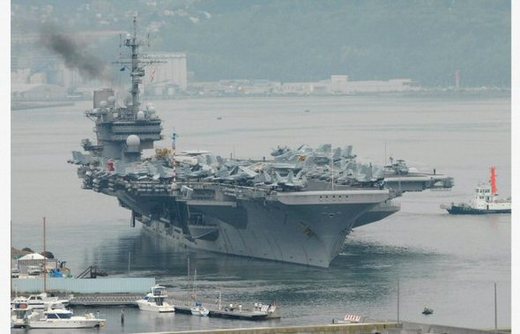 |
|
US aircraft carrier Kitty Hawk leaves a Japanese port on July 5. Kyodo, Yonhap news
|
Former defense ministers, opposition party members and other military officials say that the U.S. timetable signals its extreme distrust with South Korea’s Roh Moo-hyun administration. In other words, they say the hurried move by Washington is a strong warning against President Roh’s pursuit of strengthening South Korea’s autonomous self defense. They went further to say that the U.S. could withdraw its military forces altogether from the Korean peninsula, risking a decades-old alliance between the two countries. But their argument seems to have flaws. As a high-ranking U.S. official said, the U.S. has not specified an exact timetable for the transfer, while South Korea has mentioned the year 2011 for the deadline. "No agreement has been reached on when the right should be transferred," the official said on condition of anonymity. Though the remark could be merely diplomatic rhetoric, the official’s comments mean that more discussion on the timeframe is likely to come. South Korea’s vice foreign minister Yu Myeong-hwan also said in a briefing that the U.S. proposal for the timetable is symbolic, dismissing concerns that there is a heated disagreement between the two countries on the issue. Behind the U.S. move to transfer the military command lies the ongoing effort to realign its military forces worldwide. President Bush and Defense Secretary Donald Rumsfeld have insisted on readjusting the U.S. military enough to swiftly respond to new threats. The U.S. military stationed in South Korea is typical of the current Cold War-based military structure, so it should be the first thing to go in the overhaul. As the U.S. has to deal with a war in Iraq, the realignment of troops elsewhere is taking place at a faster pace. The relocation of the 2nd Infantry Division below the Han River and other military overhauls in South Korea were done in line with these international factors. The U.S. does not seem to see its military here as only a deterrent against the North’s possible invasion. The issue of transferring wartime control, which has been pursued since the late 1980s, is something that the U.S., for its part, has to facilitate. The 2009 timetable can also be interpreted as an effort by Washington to complete the issue before President Bush’s term ends.






